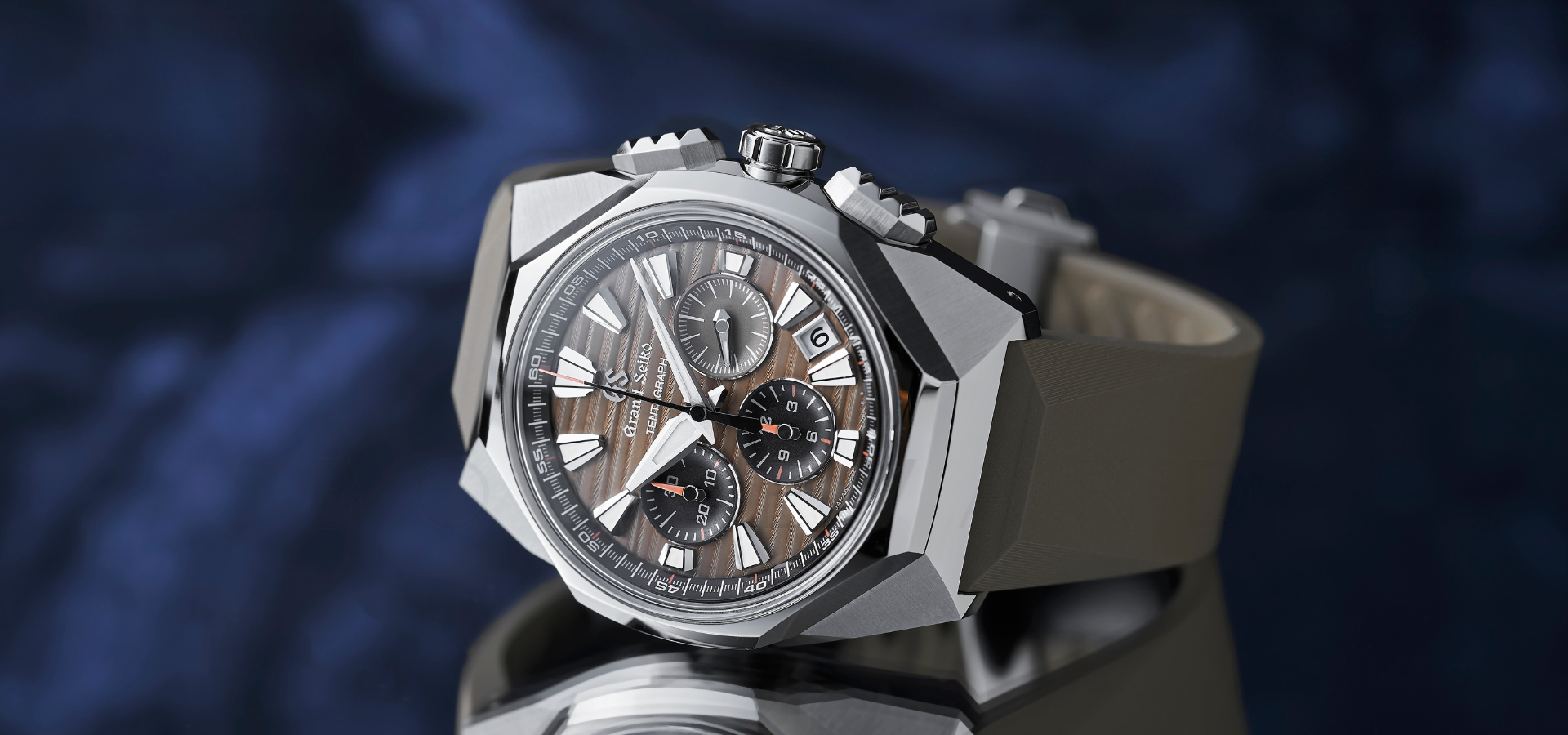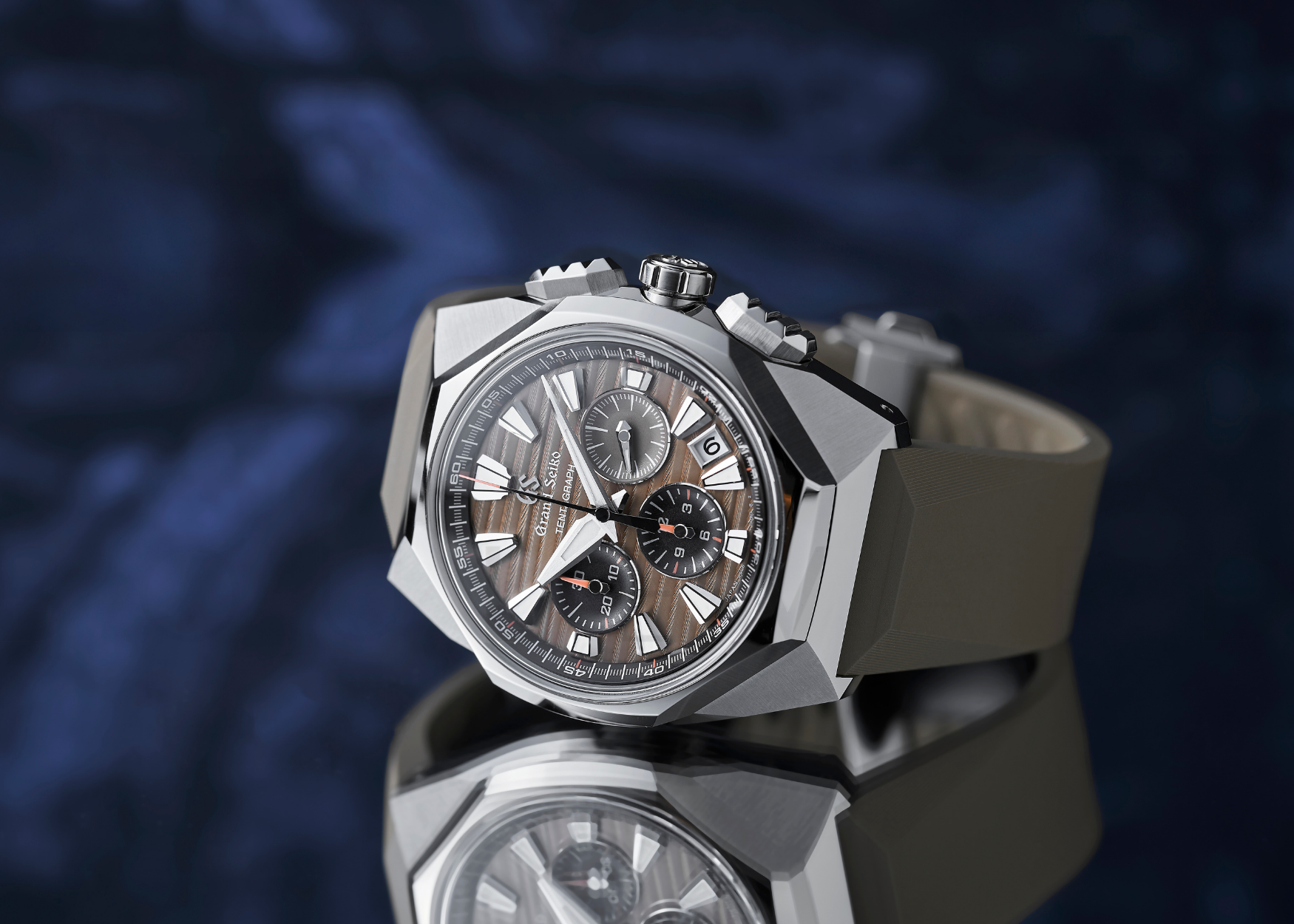The interview: Grand Seiko’s Akio Naito on the brand’s journey from functional mastery to emotional storytelling
by Hamish McDougall
Photography by Kevin Khng
Seiko Watch Corporation’s president Akio Naito talks us through Grand Seiko’s journey into the emotional heartland of high horology.
The story of Grand Seiko is unique, among the larger high-watchmaking houses, for being consciously written, rather than retold. Set against a competitive landscape of century-(or centuries-)old Swiss maisons, whose identities were forged in watchmaking antiquity by pioneering complications, mastery of engraving or enamelling, or an exquisite level of hand-finishing, Grand Seiko began life under the Seiko umbrella, with the ambition not only to create an haute horlogerie capability, but moreover—and perhaps even more challenging—a high watch brand.
“Grand Seiko was born back in 1960 as the pinnacle of Seiko’s watchmaking,” says Akio Naito, president of Seiko Watch Corporation. “All the top watchmakers we had got together and created the best mechanical watch ever made, to compete with the luxury Swiss brands. Back then, what they meant by the ‘best watch’, was in terms of accuracy, durability and legibility—all the functional features of a timekeeping device. That was back in 1960, and we kept that DNA for many years.

Akio Naito, president of Seiko Watch Corporation. Top: Sport Collection The Tentagraph SLGC009.
“But the fact is, we really struggled to develop Grand Seiko outside Japan. And so around 2015 or 2016, we started realising that perhaps we should do something in addition to creating the best functional watches. For that, we thought emotional value was very important.”
Naito himself seems to embody the brand’s apparently calculated fusing of functional mastery with an increasing, and even encroach-ing level of emotion. Naito was assigned to the legal department as an in-house lawyer in 1984 (and he remains the general counsel for Seiko Group), before moving to head up the brand’s operations in the United States in 2016, and then taking on the global leadership in 2021.
His conversation weaves between an outsider’s (or lawyer’s) corporate pragmatism to flights of horological passion, as he leaps from the historic challenges of the US market—“The company had been in the red for two consecutive years, and the morale of the employees was very low”—to the latest novelties—“The case design is named ‘Tokyo Lion’, which is the symbol of Grand Seiko from the early days; it’s bold, aggressive and sporty, with the high-beat chronograph mechanical movement with probably the longest power reserve for such a movement”—to an almost poetic fervour for the future of mechanical watches: “They’re almost like a lifetime companion”.
Accuracy is still, naturally, at the beating heart of the brand’s identity, but the maison’s quartz history itself offered the inspiration for a key feature of the high horology—and emotional value—that followed: the Spring Drive.
“In 1969, we launched the world’s first quartz watch, Seiko Astron,” says Naito. “This design concept was born from a single watchmaker, a mechanical engineer who was part of the team that developed Seiko Astron. The moment the team succeeded in creating the quartz watch, the next step for them was to remove the battery. This was the dream that eventually came true.
“What the Spring Drive is all about, is the combination of mechanical watchmaking expertise, plus the electronic watchmaking of a quartz watch—and it was born in 1999. We’ve kept innovating this Spring Drive movement and arrived at this one with UFA: Ultra-Fine Accuracy. The deviation of this watch is only 20 seconds per year. The Spring Drive is our proprietary technology, not available from any other brand.”
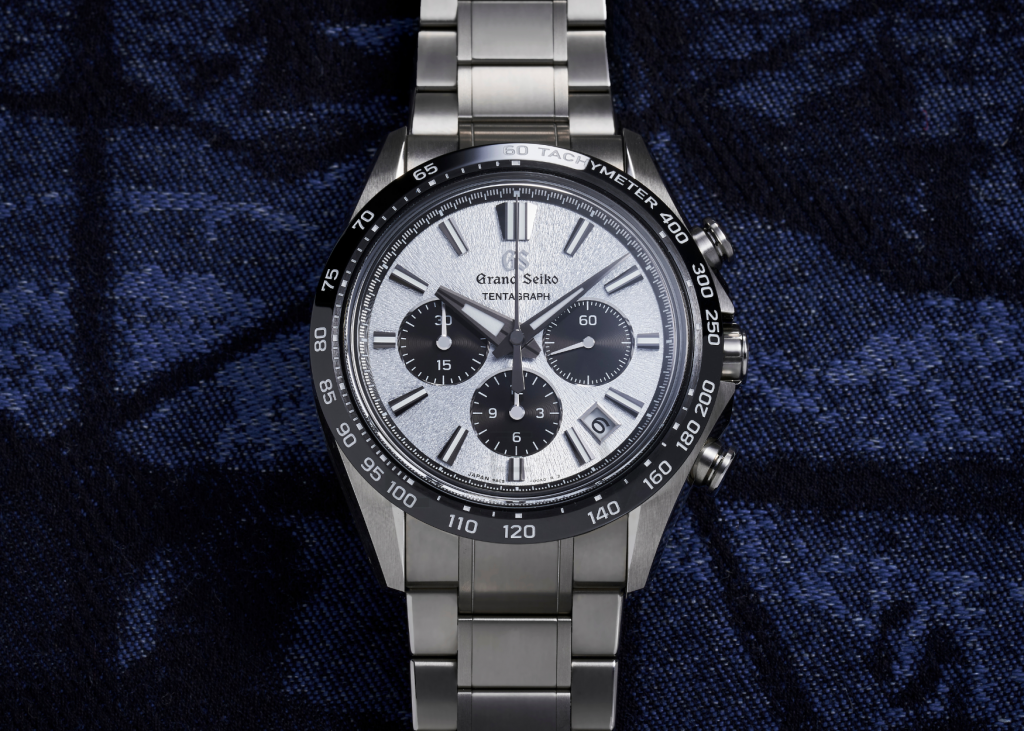
Evolution 9 Collection The Tentagraph SLGC007.
It’s an exceptionally handsome piece (shown on the following page), with an initial sheer simplicity that’s set off by the elegantly textured face inspired by the snow-covered trees of the Kirigamine Highlands, encased in either titanium (as shown) or platinum, which features a softly alluring blue dial.
The simplicity, the alpine tranquility, all of it, of course, belies the prodigious complexity of the Spring Drive UFA’s Caliber 9RB2 movement, which humble-brags accuracy to within 20 seconds per year. “This is the first time that an automatic Spring Drive movement has been realised in a 37mm dial case size,” Naito adds, “which is in tune with the current trend of smaller watches.”
He’s right, of course. It’s an arrestingly elegant size—a statement watch that catches the eye precisely because it doesn’t need to shout, or crowd the wrist. That said, for those who prefer a less discreet state-ment, Grand Seiko continues to oblige. The Spring Drive UFA offers a remarkable aesthetic counterpoint to the muscular, almost futurist aggression of the Tokyo Lion Tentagraph (shown on the first spread), where the tooled, machinic geometries demand, rather than attract, attention.
“The general trend for an everyday watch has been a slimmer and smaller case size, at least in the last ten years or so,” says Naito “And the opposite of this trend is the bold, aggressive and sporty Grand Seiko Tentagraph—which we released two years ago. The new case design is named ‘Tokyo Lion’, which is the symbol of Grand Seiko from the early days.”
Eschewing the colour pops, jewels or hyper-complication of many of this year’s larger-than-life pieces, the Tokyo Lion relies on size, yes, but moreover—on design.
It cuts a fine figure with a textured dial inspired by the lion’s mane, the chrono-graph’s three-dimensional subdials, and a ‘brilliant hard titanium’ case set off by the sporty rubber strap tapering from the wide, claw-like, hairline-finished lugs.
So will this decidedly differentiated line-up of emotionally resonant novelties cut through with the next generation of collectors? “Today’s younger consumers try to gather information—not from the mass media and advertising, but from word of mouth and their peers,” shares Naito. “The older gener-ations, on the other hand, tend to prefer established brands, something that they heard from the early days, which is then passed on from their parents’ generation. Most of the younger generation, they’re willing to search for their own value.
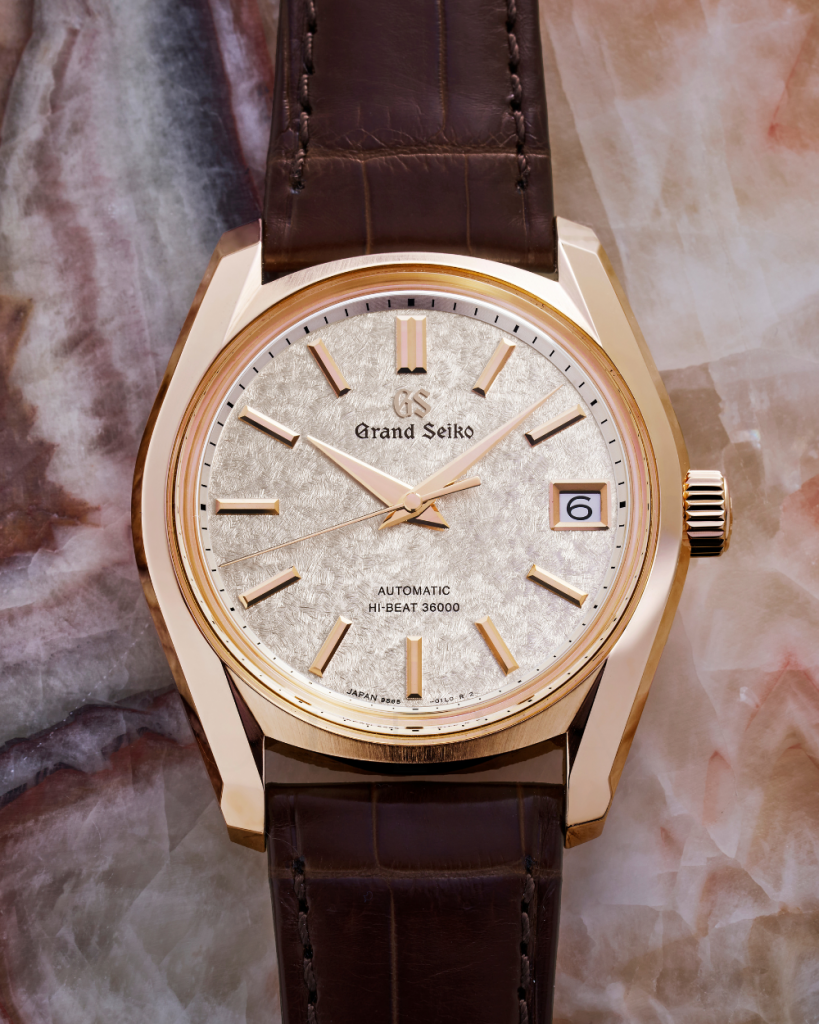
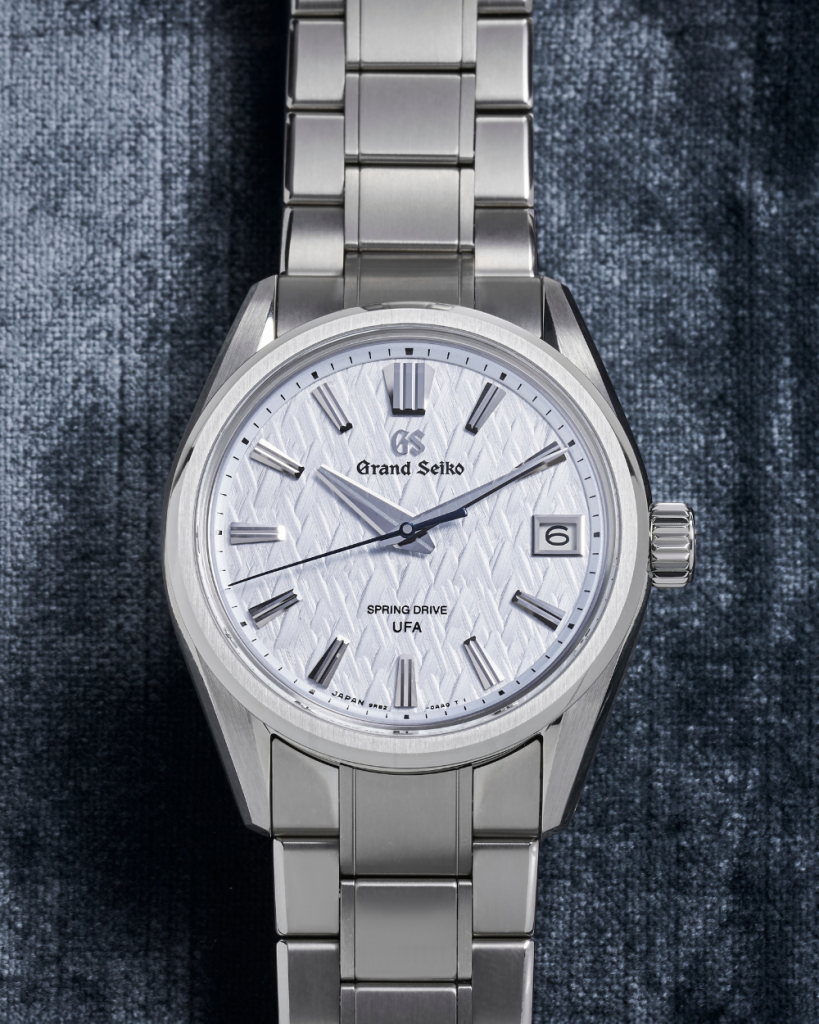
Left: Heritage Hi-Beat 36000 SBGH368. Right: Evolution 9 Collection Spring Drive UFA SLGB003.
“Grand Seiko has been known for many years in Japan—it’s an established luxury brand. But we are a relatively new brand in the global market, and our consumers, on average, are quite young—much younger than the consumers in Japan. So they have a different taste toward Grand Seiko.”
And it’s here that Grand Seiko may in fact have an advantage over the storied Swiss brands that have adorned the wrists of generations before us: the upcoming crop of collectors is looking not to replicate or appropriate the status signals of a bygone age, but to differentiate and define their own style—and values.
“Younger consumers are interested in the heritage or the story behind the brand,” says Naito. “But they are also very conscious of the sustainability—what the brands are doing in terms of contributing to the environment. In our case, we have some models featuring white birch trees, which we also use to support white birch forest conservation activities. We actually send our own employ-ees to these forests two or three times a year, in collaboration with the local government, to carry out conservation activities, that in turn inspire our watch designs.”
And perhaps this is the underlying emotion of the brand: what it means to be a Japanese high watchmaker, to be inspired by the country’s unique natural environment, to innovate techniques of embossing that evoke what Naito poetically calls “the subtle beauty of shadows”, and to underpin it all on a level of accuracy that is the envy of many, if not most storied Swiss maisons.
Go further with the 2025 edition of the Watches and Wonders in Geneva.
